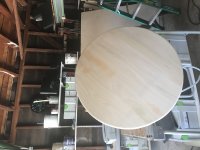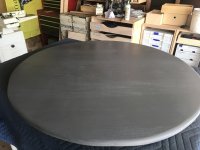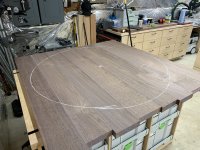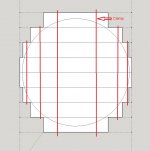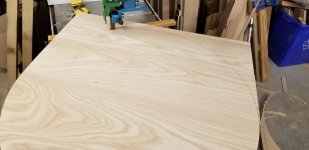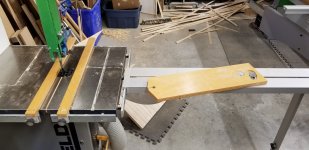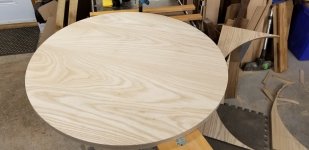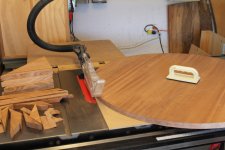Hi All;
I wanted to seek the wisdom of the crowd on a project I'm working on. I'm using 12x100 Dominos to do a glue up on some 1 1/2 in thick walnut boards to make a 48" round kitchen table top. I'm starting out with 8, roughly 6-7" wide boards in a square. I'll use my OF1400 and the Rockler circle jig to cut it.
I've done this before but on a smaller scale. I was curious to know if you would do all the mortising and gluing up at one time, or split it into smaller pieces? As an example glue up 4 boards for each half on one day and then glue the two halves together the next day?
I wanted to seek the wisdom of the crowd on a project I'm working on. I'm using 12x100 Dominos to do a glue up on some 1 1/2 in thick walnut boards to make a 48" round kitchen table top. I'm starting out with 8, roughly 6-7" wide boards in a square. I'll use my OF1400 and the Rockler circle jig to cut it.
I've done this before but on a smaller scale. I was curious to know if you would do all the mortising and gluing up at one time, or split it into smaller pieces? As an example glue up 4 boards for each half on one day and then glue the two halves together the next day?

